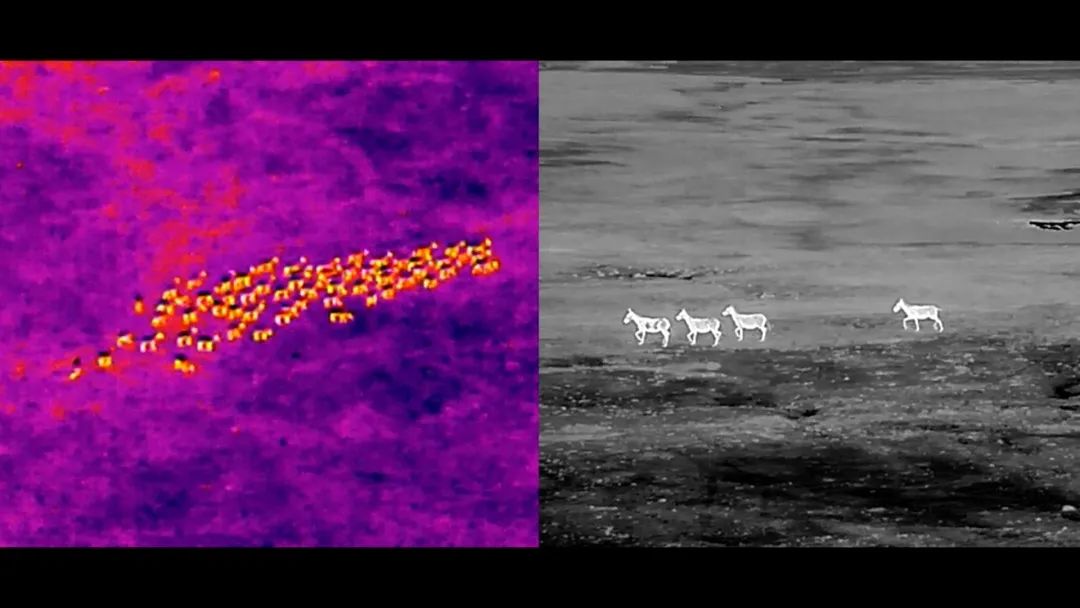
DJI has used an M300 RTK drone equipped with Zenmuse H20N to provide researchers in China accurate night vision capabilities that enabled the recent observation and tracking of rare, migrating Tibetan antelopes toward their reproduction area.
Nicknamed “plateau elves,” Tibetan antelopes are among the threatened species that scientists at the Northwest Plateau Institute of Biology, Chinese Academy of Sciences sought to observe during a recent migration period. The area monitored was at an altitude of 4,600 meters, and featured rolling terrain making constant manual monitoring in daylight difficult – and virtually impossible at night.
Read: DJI (already) releases Avata FPV drone firmware update
As a work-around to those challenges, researchers decided to get an elevated perspective. To do so they used DJI’s M300 RTK to flatten the nearby peaks and valleys, and the Zenmuse H20N’s high-power zoom infrared thermal imaging, night vision, and laser ranging functions to keep constant watch of Tibetan antelope herds.
Information and insights obtained from the data collected will shape steps taken to protect the species and other animals plateau animals from encroaching human presence.
The study took place at the end of July, about midway through the annual May-September migration period of female antelopes through the Sanjiangyuan region, home to the Qinghai-Tibet Railway Wubei Bridge and the Qinghai-Tibet Highway. To assist the effort, DJI industrial application engineers brought the Matrice M300 RTK enterprise drone and night vision thermal imaging camera Zenmuse H20N to enable constant monitoring of Tibetan antelopes during the day or after dark.
Those assets allowed direct yet unobtrusive observation from distances of 500 to 600 meters. The digital data DJI’s M300 drone collected also allowed for far more accurate counting tallies, and clear images permitting researchers to identify individuals and various habits of Tibetan antelope as they migrated to and from reproduction areas. Those including nocturnal behavior previously unknown to specialists.
“Current technology really helps in active tracking shooting at night, which was difficult to achieve in the past,” said research leader Lian Xinming. “UAVs with infrared thermal imaging lenses, which can determine the whereabouts of nearby wild animals as soon as the drone flies, will tell you where they are hiding, and considerably increase the study’s findings.”
Read: DJI updates RC Pro firmware enables Mini 3 Pro compatibility
Still, it took some learning for researchers to fully exploit the DJI M300’s full potential, and pilot the drone to work around the habit of Tibetan antelopes to hide from view any way they can – especially at night.
“We lifted the drone to a height of more than 200 meters (and) turned the fuselage to sweep, because the night temperature was low,” Lian says of one night-time observation temporarily confounded by the animals’ furtive maneuvers. “The vegetation coverage was small, and the terrain was very flat, and (the drone) quickly found a suspected heat source through the H20N’s infrared thermal imaging lens. “
FTC: We use income earning auto affiliate links. More.




Comments